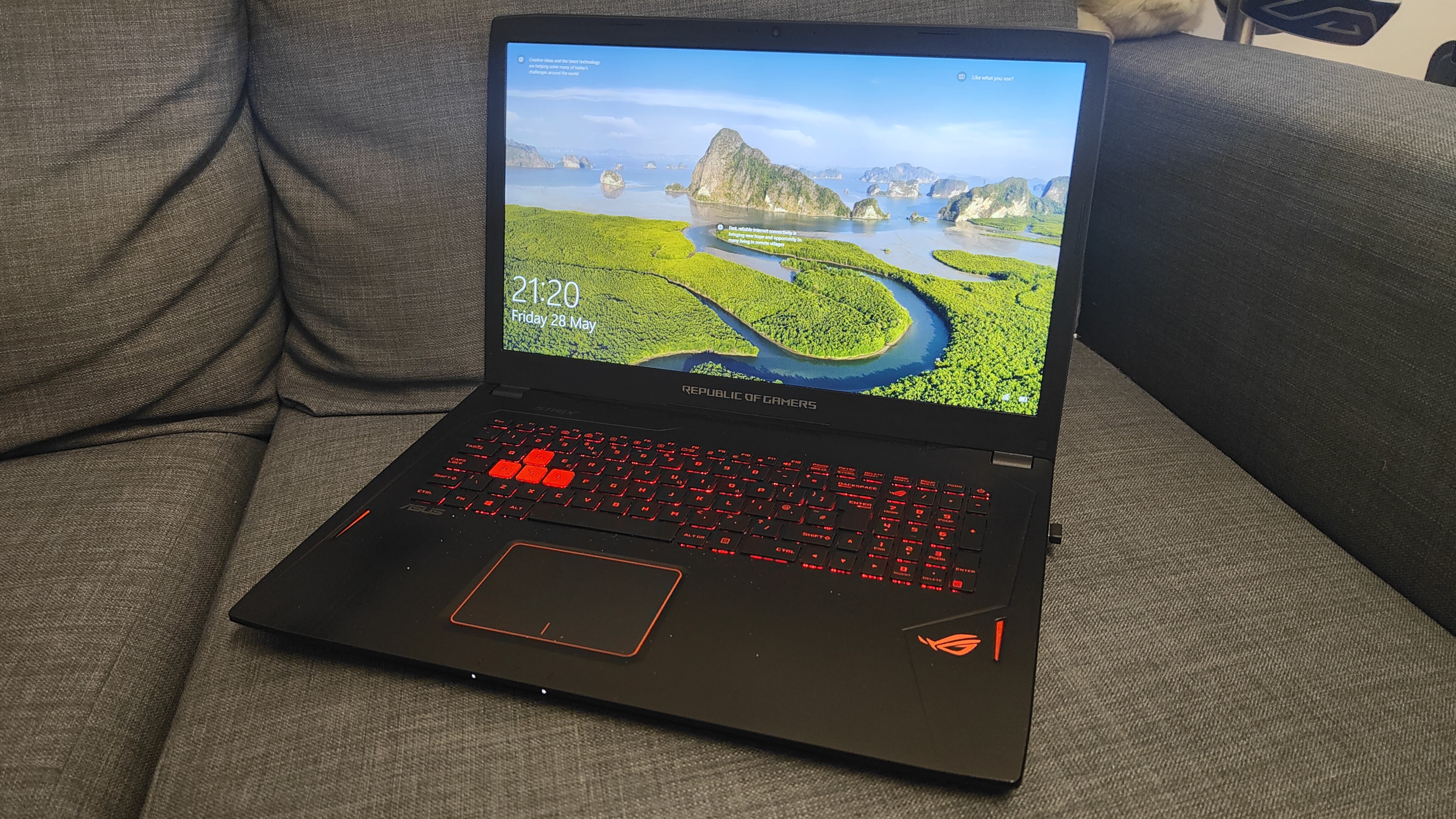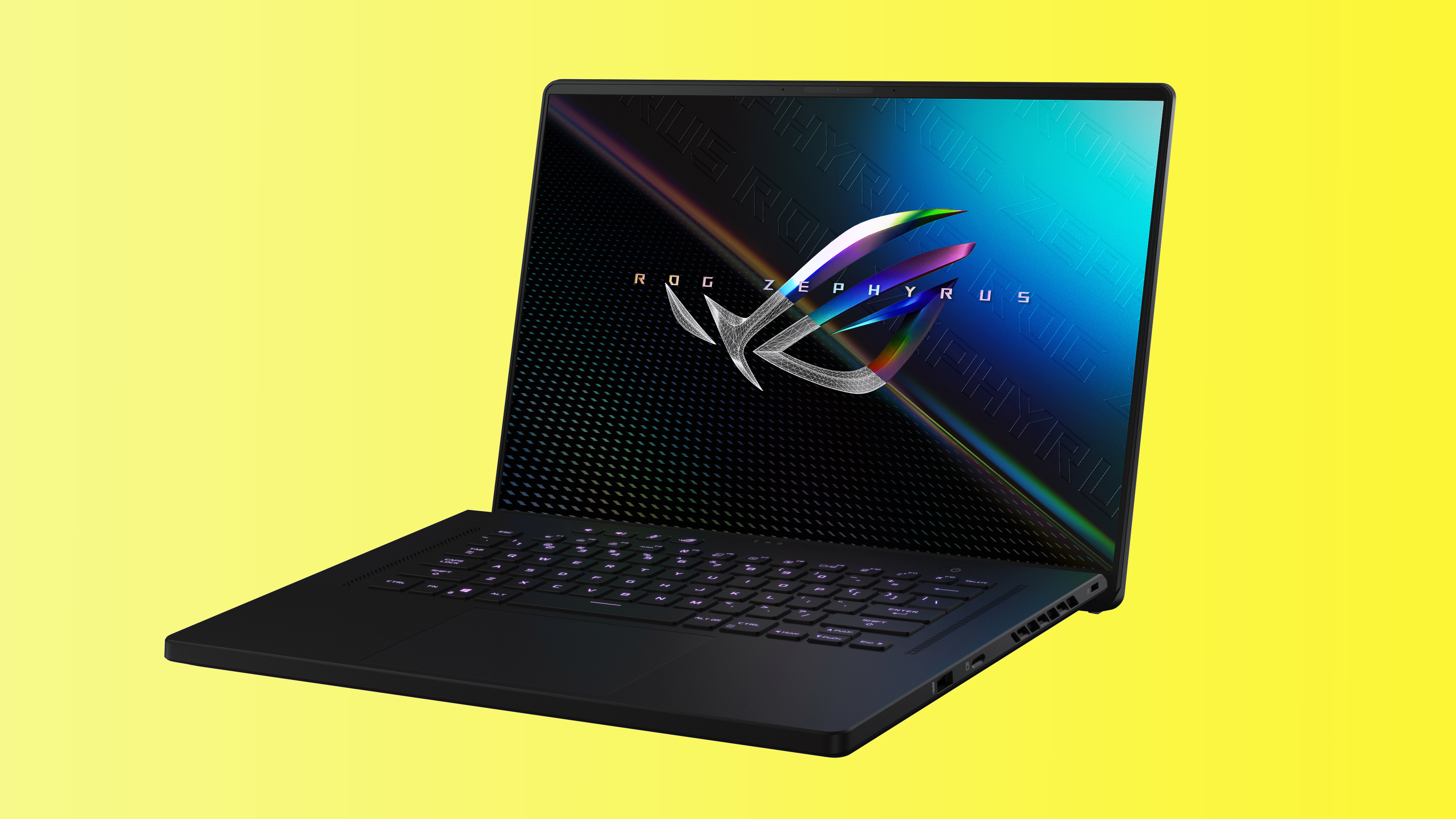Sorry, nerds — gaming laptops look like they’re made for regular people now
Gaming laptops are getting boring but I think that's a good thing

I’ve always liked the idea of playing modern PC games on the go, but for years gaming laptops were a bit of a joke. They were heavy, expensive, guzzled battery, and offered performance that was miles behind a desktop gaming PC despite costing a lot more.
That changed with the introduction of Nvidia’s Pascal GPU architecture, which allowed laptop-grade GeForce GTX 10-series graphics cards to offer performance that was reasonably close to their full-fat desktop brethren. Pascal also enabled powerful gaming hardware to be packaged into machines that wouldn’t break your back carrying them more than a few blocks. And the likes of the Razer Blade 15 Advanced and the Asus ROG Zephyrus G14 shows that some of the best gaming laptops could be reasonably compact and light.
- Razer BlackWidow V3 Mini HyperSpeed review
- These are the best laptops you can get right now
- Hurry! MacBook Pro M1 is $200 off for Memorial Day sale
That’s all very good but one thing that’s taken far too long to change is the overall aesthetic of gaming laptops.
Pretty much until around the last year or so, gaming laptops were festooned with a “gamer” aesthetic. Angular chassis were covered in red accents and logos that in no uncertain terms screamed “this is a gaming laptop.”
ROG your laptop now....but in private

I have a 2017 17-inch Asus ROG Strix gaming laptop with a convoluted set of numbers and letters after it that I can't recall. It’s a fantastic machine that lets me have a PC gaming experience away from my desktop in my flat; it’s decent screen and tactile keyboard also means it’s a solid work machine. But it’s not subtle.
The black aluminium lid has a bright red-orange Asus Republic of Gamers ‘angry eye’ logo with two angular slashes of the same color either side...for reasons unknown.
Open the lid and your eyes are met with another eye logo, red-orange slashes for speaker grilles, red-orange accents on the trackpad, red-orange keyboard symbols, and bright red-orange WASD keys.
Get instant access to breaking news, the hottest reviews, great deals and helpful tips.

These shout “gamer” loudly enough. But the laptop also has “Republic of Gamers” written in a thick font on the bottom of the reasonably chunky display bezels and at the bottom of the lid on the other side.
While far from the most ostentatious of gaming laptops past and present, it’s not exactly a machine I’d happily take out and use in some trendy East London coffee shop or bar. Even at home it tends to be popped under a coffee table when not in use or has a Surface Pro and iPad mini popped on top of it to cover the glaring ROG logo.
So I’m rather gratified to see that more recent gaming laptops have started to pare back the logo-heavy, red accented design language. While Dell’s Alienware laptops are unmistakably gaming machines, the Dell G-Series laptops are much less shouty about their gaming pedigree. And Razer has had the gaming-laptop-in-a-MacBook-Pro look locked down for a while now, but at an eye-watering price.
Discreet design can hide graphics grunt
However, the advent of mobile Nvidia GeForce RTX 30-series graphics cards and a slew of new gaming laptops they’ve brought with them have ushered in a suite of machines that look positively sedate compared to their predecessors. In fact, they arguably look a little dull and corporate like; more Lenovo business machines than screaming frag-enabling slabs.
That’s a very good thing in my opinion. As much as I like over-the-top machines — from dumb gaming phones and RBG-swaddled desktop PCs to Lamborghinis — I’m now at the tender age of 34; my days of questionable design and fashion are arguably over.
But I still find powerful laptops very desirable; I want to be able to bring you all the hot tech news 9-to-5 but then kick back and fail miserably at Apex Legends. However, I don't want to carry a machine that makes the latter bleeding obvious.
And it doesn't look like I’m alone. Acer’s new Predator Triton 500 SE, which packs in powerful specs into a reasonably compact gray-ish frame that has plenty of ports and rear vents, but doesn’t cover them with neon colors. Sure, there's a per-key RGB lighting on the keyboard. But there's also a 16:10 display, which is one of the better ratios for productivity.
Acer told me that it’s taking this approach to provide a gaming laptop that’s appealing to creative types as well as people with online handles like Killbo Fragins.

Acer is not alone, with its arch-rival Asus having recently revealed the Zephyrus M16. That laptop also comes with a 16:9 display and a huge 94% screen-to-body ratio, offering a lot of productivity screen space.
And it’s all put in a design that’s got more than a whiff of MacBook Pro about it, yet still offers the latest Intel Tiger Lake H processors and Nvidia GeForce RTX graphics.

A similar story can be seen with the Samsung Galaxy Book Odyssey, which has less powerful specs but is rather slim and seems keenly targeted at the cross-section of gamer and creator.

Even while HP's Omen 16 gaming laptop sticks with the classic 16:9 aspect ratio, it still fits in a 16-inch display with slim bezels into a 15-inch chassis, and eschews a lot of OTT design fliers.
Its wedge design actually reminds me of a MacBook Air that’s been in the computing equivalent of a gym. In a way, it’s a bit boring to look at and I rather like it for that.

In short, there are now a lot more gaming laptops that could reasonably double as work machines without the social awkwardness of toting a laptop that tells your colleagues you care more about kill-death ratios than quarterly performance.
That’s not to say there isn’t a place for loud-and-proud gaming laptops, as there are still a lot of those around with the latest processors and graphics. But this move to more compact and practical portable gaming is not only appealing to me, but also a good move for performance laptop design.
As the likes of Asus and Acer push to make laptops that offer powerful specs in a slim chassis with fan systems that doesn't sound like a jet engine, innovations in cooling can filter down into other laptops. That could yield ultraportable or hybrid laptops that deliver impressive power in stupidly thin designs.
So while gaming laptops get duller, the engineering smarts they hide are interesting, and show that there’s still a lot more innovation in the computing world.
- More: Check out the best gaming mice you can buy

Roland Moore-Colyer a Managing Editor at Tom’s Guide with a focus on news, features and opinion articles. He often writes about gaming, phones, laptops and other bits of hardware; he’s also got an interest in cars. When not at his desk Roland can be found wandering around London, often with a look of curiosity on his face.
